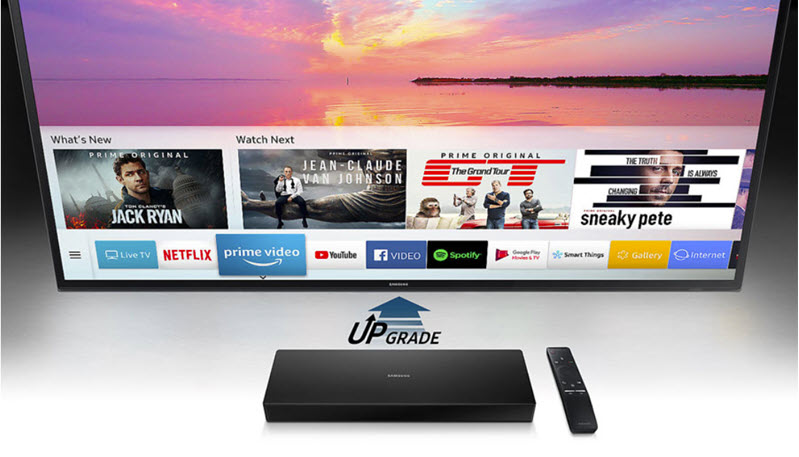
First, what are the issues that determine the lifetime of a product like a TV?
- There is, of course, the issue of the reliability of the electronics – which is where Rtings is focusing its attention
- Second, there is the issue of whether a set can be repaired – which depends on technical staff and information and parts availability
- Third there is a question of technical compatibility
- Finally, there is a question of when the user simply wants to upgrade the set to something newer or better.
The reliability of the electronics should be very high, these days. There is so much integration into highly reliable semiconductors that despite the massive complexity of modern TVs, there are fewer connections than in older sets and connections are often where you see reliability problems. There are usually, these days, fewer circuit boards. There are also fewer high voltage components than when TVs used CRTs, valves (tubes) and, in later years, high voltage drivers for fluorescent backlights.
Classically, electronics reliability follows a ‘bathtub ‘ curve. That is to say, one end of the curve, at the start of operation is very steep, with faulty components or assembly being exposed within a few hours of use. Once the early faults are revealed, it usually takes quite a long time for more issues to become apparent and these will be revealed more gradually, giving the shallower slope at the other side of the tub. Sometimes a particularly weak or badly specified component can cause ‘epidemic’ failures which can be particularly frustrating for consumers if they appear after the end of a warranty period. We all know how annoying it is when a repairer says ‘Oh, yes, I’ve seen a lot of these – I know what’s wrong’.
For products that need to be really reliable ‘out of the box’, the initial failure period can be accounted for by ‘aging testing’ at the factory. I used to work for a company that made very reliable products and every monitor was tested for dozens of hours before shipment which dramatically reduced early failures. However, I don’t know of any TV makers that do this! (If you know of any, do let me know). We once installed over 600 monitors for a big financial services client without a single ‘out-of-box’ failure. I won’t name the supplier of the graphics boards used, as they are still in business, somehow, but their failure rate was very high!
As Rtings points out, their tests will not reflect early failure as all of the sets they are testing will have been used for some time in reviews.
Repair Issues
When a product does develop a fault or fails, key is being able to get hold of the information and parts for a repair. I’m handy with a soldering iron and it’s great when I can get hold of a proper service manual and even better when parts are available for a long period of time if I have a faulty product.
Here, the ‘Right to Repair’ movement and sites such as iFixit are having a really helpful role in pushing legislators into mandating the availability of spares and manuals. We’re a long way from a good situation yet, in my view, but we are headed in the right direction. To be fair to TV makers, sometimes it’s impossible to still buy parts within a couple of years of the set being made. However, if set makers insisted on replacement parts being available, or at least parts with the same ‘fit, form and function’, it could eventually change the way the industry works.
Technical Compatibility
Turning to technical compatibility, in the TV market, most buyers want to be ‘upgrade-proof’ when they buy a set. They don’t want to buy a Betamax if the world is going to VHS and in most parts of the world, when they buy a set, they regard it as a long term investment and will imagine getting 7-10 years use. This means that they are vulnerable to the argument that ‘Well you don’t need this feature now, but you will in the future’ which often leads to them buying features they may not need now, or ever! This kind of sales argument has been used to push all sorts of features, including 3D, even though 3D TV lost momentum and became unimportant. It’s known as ‘upgrade proofing’.
A real issue of technical compatibility is in interfacing. Standards such as HDMI move on and eventually the user may want to connect to something that won’t have the required interface. These days, a SCART interface on a TV would not have many devices to connect to having been replaced by HDMI. Another hot topic is the availability of apps in SmartTVs. What happens if your SmartTV can no longer access Netflix or one of the streaming services? As we have seen, that is a real problem. (Although an analyst I knew used to say “You’re Smart TV becomes your stupid TV three years later”. In broadcast, too, things move on, but changes such as the move from DVB-T with MPEG-2 to DVB-T2 with other codecs has usually been fixed by adding extra boxes.
Samsung experimented with ‘upgradable’ TVs for a while around 10 years ago, where you could replace the ‘Smarts’, but this was not a success as few people bought the upgrades and adding the feature increased the cost and complexity. Further, boosting the ‘smarts’ doesn’t help with visual issues such as more luminance or better colours, resolution or HDR. However, some consumers cared. After the firm stopped making ‘Evolution Kits’ for its 2012 TVs, before the end of its promised life, the firm did make a Kit in 2018.
In much of the world, a TV is a ‘distress’ purchase. It’s an expensive durable and is only replaced when it no longer functions. In wealthier parts of the world, especially in the US, a new TV is just seen as a ‘nice to have’, so replacement cycles are shorter. In the past, with smaller sets, if the main TV was replaced for something better, but was still working, the older one would often be moved to another room including bedrooms. However, as Marek Maciejewski pointed out to me at IFA this year, now that main sets are at 55″ or 65″ or larger, this is less realistic and that may mean that set replacement cycles get longer. (I have successfully reduced the pain to my wife of the expense of a new set by pointing out that one of our children may benefit from our older set! This applied even when they had left home). (BR)



